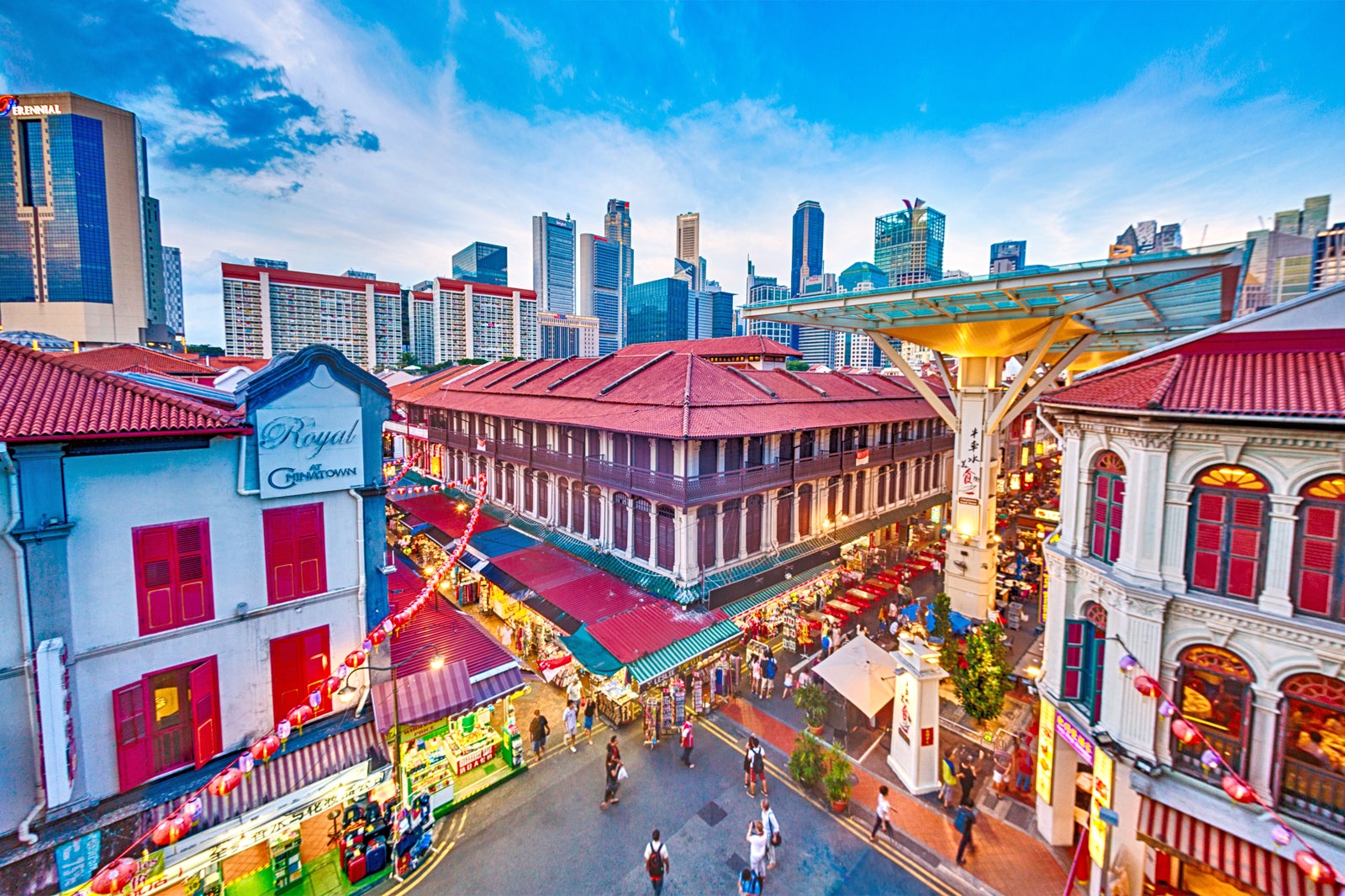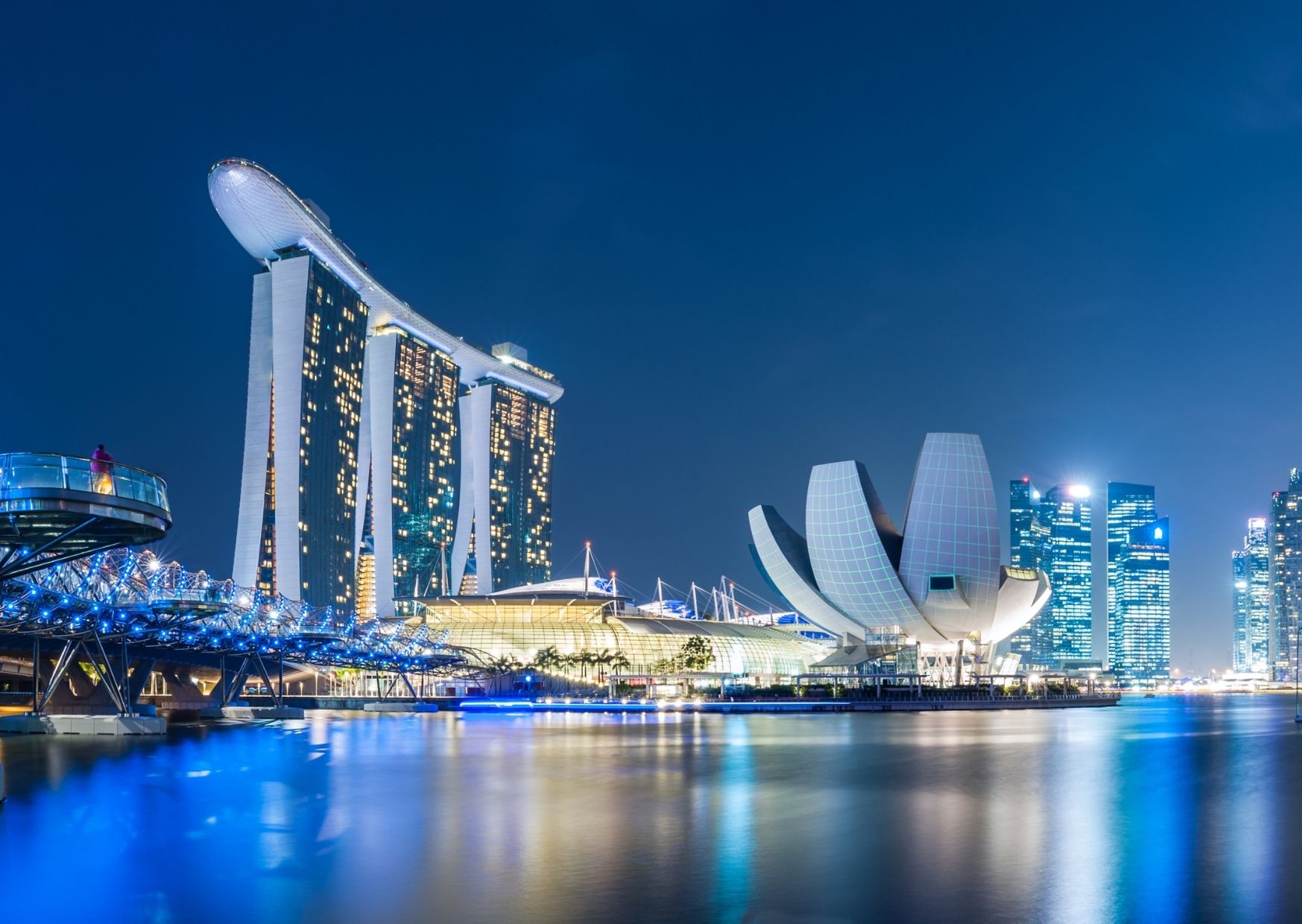
Singapore, the dazzling city-state at the heart of Southeast Asia, is a destination of breathtaking contrasts. It’s a place where futuristic skyscrapers draped in vertical gardens share a skyline with colonial-era shophouses, where Michelin-starred restaurants thrive alongside bustling hawker centres, and where a melting pot of cultures—Chinese, Malay, Indian, and Western—coalesce into a uniquely Singaporean identity. Often called the "Lion City" or the "City in a Garden," this island nation is a masterclass in urban planning, efficiency, and ambition.
For the modern traveler, Singapore offers a seamless, safe, and utterly captivating experience. Whether you’re drawn by its world-class attractions, its legendary food scene, or its lush green spaces, this guide will provide everything you need to plan the perfect trip.
A Glimpse into Singapore’s Remarkable History

Related Articles about A Comprehensive Guide to Singapore: The Lion City Beckons:
- Johannesburg: A City of Gold and Grit, Waiting to be Explored
- Japan: A Tapestry of Tradition and Tomorrow – Your Ultimate Guide to Exploration
- Malaysia’s Crown Jewels: A Guide to the Nation’s Finest Hotels and Unforgettable Experiences
- Unveiling the Treasures of Jordan: A Comprehensive Guide to Your Arabian Adventure
- Busan Beckons: A Symphony of Sea, Culture, and Culinary Delights
To truly appreciate modern Singapore, one must understand its whirlwind journey from a humble fishing village to a global powerhouse. Originally known as Temasek, the island was a small trading post for various regional empires. The pivotal moment in its history came in 1819 when Sir Stamford Raffles of the British East India Company established a trading port here. Its strategic location on major shipping lanes ensured its rapid growth.
The 20th century brought turmoil with the Japanese occupation during World War II, a dark period that deeply scarred the national psyche. After the war, Singapore became a self-governing state, briefly merging with Malaysia in 1963 before being expelled and gaining independence in 1965. This was a moment of profound uncertainty. A tiny island with no natural resources, a diverse population, and regional instability, its future looked bleak.
However, under the visionary, if sometimes authoritarian, leadership of its first Prime Minister, Lee Kuan Yew, Singapore underwent a miraculous economic transformation. Through strategic planning, a focus on education, anti-corruption measures, and attracting foreign investment, it evolved from a developing nation to a first-world leader in finance, technology, and logistics within a single generation. This history of resilience and relentless progress is palpable in every corner of the city today.
When to Visit: Navigating the Tropical Climate
Singapore’s location just one degree north of the equator means it has a tropical rainforest climate: hot, humid, and rainy year-round. There are no distinct seasons like spring, summer, autumn, or winter. Instead, the climate is dictated by two monsoon seasons.
- Northeast Monsoon (November to January): This is the wettest period, characterized by more frequent and prolonged rainfall. Temperatures are slightly cooler, providing a small respite from the heat.
- Southwest Monsoon (June to September): This period is generally drier, though afternoon thunderstorms are still common. It can also be hazy due to winds carrying smoke from forest fires in neighbouring Indonesia.
The best time to visit is often considered to be between February and April. This inter-monsoon period typically offers the most pleasant weather, with less rain and lower humidity.
However, Singapore is a true year-round destination. Major events can also influence your timing. Consider visiting during Chinese New Year (January/February) for vibrant celebrations, the Singapore Food Festival (July) for a culinary deep-dive, or the Formula 1 Singapore Grand Prix (September) for high-octane excitement.
Getting There and Around: A Masterclass in Efficiency
Arriving in Singapore
Most international visitors will arrive at Changi Airport (SIN), which is consistently ranked as one of the best airports in the world. It’s more than just a transport hub; it’s an attraction in its own right. Be sure to visit The Jewel Changi, a stunning complex featuring the world’s tallest indoor waterfall, the Rain Vortex, surrounded by a terraced forest. With countless shops, restaurants, a cinema, and even a canopy park, it’s the perfect introduction to the city’s blend of nature and innovation.
Navigating the City
Singapore’s public transportation system is a marvel of efficiency, cleanliness, and affordability.
- MRT (Mass Rapid Transit): The subway system is the backbone of the city’s transport network. It’s air-conditioned (a welcome escape from the heat), punctual, and connects virtually all major attractions. To use it, you can purchase an EZ-Link card (a stored-value card), a Singapore Tourist Pass for unlimited travel over a set number of days, or simply tap your contactless credit or debit card at the gantries.
- Buses: The extensive bus network complements the MRT, often providing more scenic routes and reaching specific locations not directly on a train line. You can use the same payment methods as the MRT.
- Taxis and Ride-Hailing: Taxis are plentiful and metered. Ride-hailing apps like Grab and Gojek are extremely popular and often offer competitive pricing. They are a convenient option, especially for groups or late at night.
- Walking: Many of Singapore’s districts, like Marina Bay, Chinatown, and the Civic District, are highly walkable. However, always be prepared for the heat and humidity. Carry a water bottle, wear light clothing, and don’t be shy about ducking into an air-conditioned mall to cool down.
Where to Stay: Accommodation for Every Budget
Singapore offers a wide range of accommodation options to suit any travel style and budget.
- Luxury: For an unforgettable splurge, stay at the iconic Marina Bay Sands, famous for its rooftop infinity pool offering unparalleled city views. Other top choices include the historic Raffles Hotel, the epitome of colonial elegance (be sure to try a Singapore Sling at its Long Bar), and The Fullerton Hotel, a magnificent heritage building overlooking the Singapore River.
- Mid-Range: Areas like Clarke Quay, Bugis, and Orchard Road offer a plethora of excellent mid-range hotels. Brands like YOTEL, Hotel G, and the InterContinental Singapore provide stylish comfort, great amenities, and convenient locations without the ultra-luxury price tag.
- Budget: Budget-conscious travelers can find fantastic options in the city’s vibrant cultural enclaves. Chinatown, Little India, and Kampong Glam are home to numerous boutique hotels and modern hostels that offer a clean, safe, and social atmosphere. These locations also provide an immersive cultural experience right at your doorstep.
Top Attractions: The Unmissable Sights
Singapore is packed with world-class attractions. Here are the absolute must-sees:
-
Gardens by the Bay: This futuristic botanical garden is Singapore’s postcard image. Marvel at the towering Supertree Grove, and be sure to return at night for the spectacular Garden Rhapsody light and sound show. Don’t miss the two cooled conservatories: the Cloud Forest, with its stunning indoor waterfall and mist-filled mountain, and the Flower Dome, the largest glass greenhouse in the world.
-
Marina Bay Sands: This integrated resort is an architectural marvel. Non-guests can visit the SkyPark Observation Deck on the 57th floor for panoramic views of the city. The complex also includes a luxury shopping mall, a casino, and world-class restaurants.
-
The Cultural Enclaves: Dive into Singapore’s multicultural heart by exploring its historic districts.
- Chinatown: A bustling mix of old and new. Visit the magnificent Buddha Tooth Relic Temple, wander through the colourful streets, and sample delicious street food at the Chinatown Complex Food Centre.
- Little India: A feast for the senses. Explore the vibrant Sri Veeramakaliamman Temple, shop for spices and silks, and get lost in the sprawling, 24-hour Mustafa Centre.
- Kampong Glam: The historic Malay-Arab quarter. Admire the golden dome of the Sultan Mosque, browse the quirky boutiques along Haji Lane, and soak in the trendy, artistic vibe.
-
Sentosa Island: Billed as "The State of Fun," this island resort is a playground for all ages. It’s home to Universal Studios Singapore, the S.E.A. Aquarium, Adventure Cove Waterpark, and beautiful man-made beaches like Siloso and Palawan.
-
Singapore Zoo and Night Safari: Widely regarded as one of the best zoos in the world, the Singapore Zoo is famous for its "open concept" design, where animals roam in spacious, naturalistic habitats. Next door, the Night Safari offers a unique opportunity to see nocturnal animals in their element.
Essential Travel Tips for a Smooth Trip
- Follow the Rules: Singapore is famously clean and safe, thanks to its strict laws. Fines are hefty for littering, jaywalking, and smoking in prohibited areas. The sale of chewing gum is banned (though bringing a small amount for personal use is fine).
- Embrace Hawker Centres: The heart and soul of Singaporean cuisine is found in its hawker centres. These open-air food courts offer an incredible variety of high-quality, affordable food. Must-try dishes include Hainanese Chicken Rice, Chilli Crab, Laksa, and Char Kway Teow. Famous spots include Maxwell Food Centre, Lau Pa Sat, and Newton Food Centre.
- Stay Hydrated: The tropical humidity can be draining. Carry a reusable water bottle and drink plenty of water throughout the day.
- Connectivity: Stay connected easily by purchasing a tourist SIM card at the airport or using a pocket Wi-Fi device. Free Wi-Fi is also widely available in malls, MRT stations, and other public areas.
- Power Plugs: Singapore uses the Type G plug, the same three-pronged plug used in the United Kingdom. Bring a universal adapter if your devices use a different plug type.
- Language and Currency: English is one of the four official languages and is spoken universally, making communication easy. The local currency is the Singapore Dollar (SGD). Credit cards are widely accepted, but it’s always good to have some cash for hawker centres and smaller shops.
- Tipping: Tipping is not customary or expected, as a 10% service charge is typically included in bills at restaurants and hotels.
Conclusion: A City of Infinite Possibilities
Singapore is more than just a stopover destination; it is a vibrant, dynamic city that rewards exploration. It is a testament to what human ingenuity can achieve, a place where meticulous planning has cultivated not just a concrete jungle, but a thriving garden city. From its rich history and diverse cultures to its stunning modern architecture and culinary delights, the Lion City offers an experience that is as seamless as it is unforgettable. Pack your bags, bring your appetite, and prepare to be amazed by this small island with a big heart.






